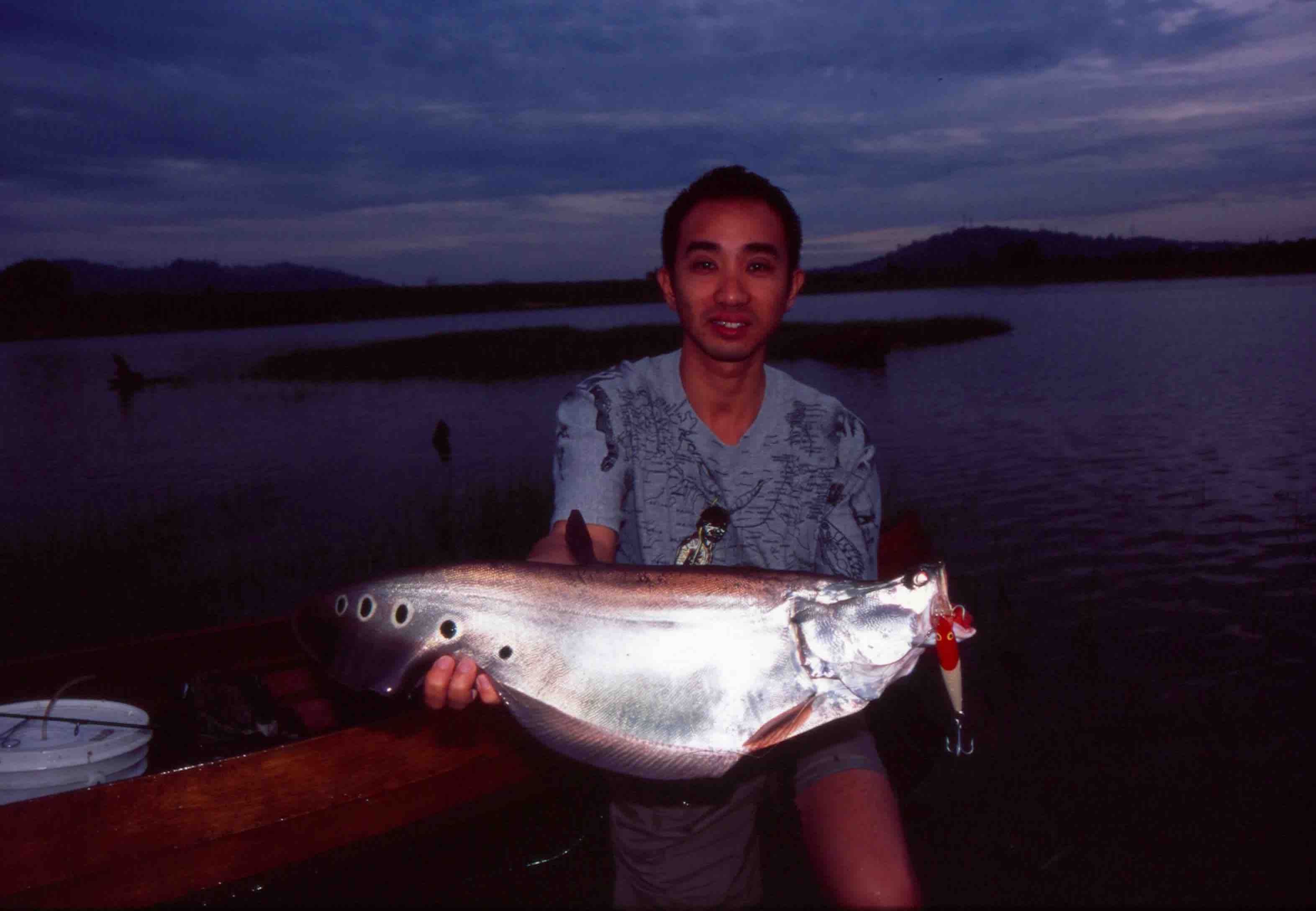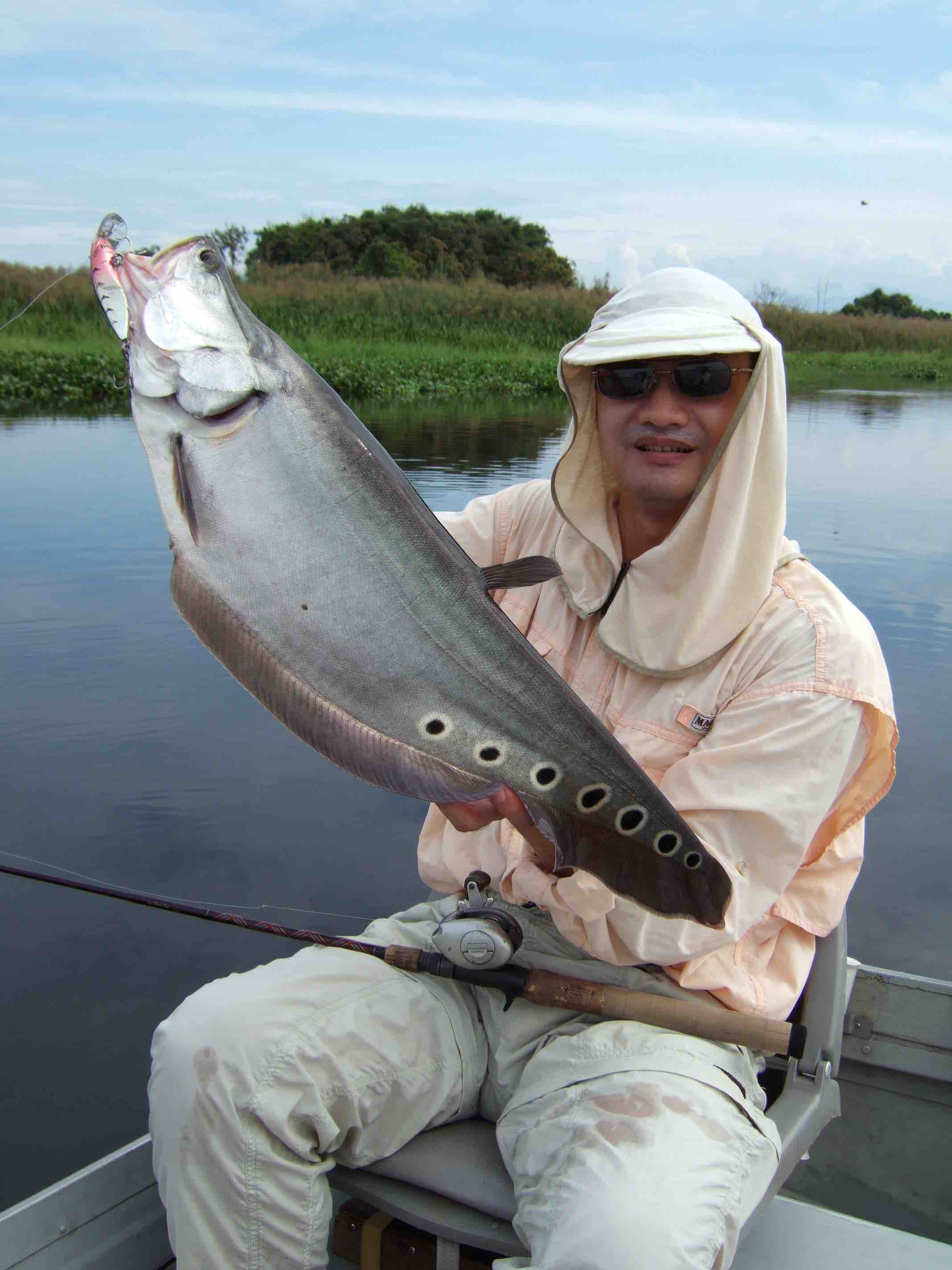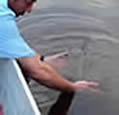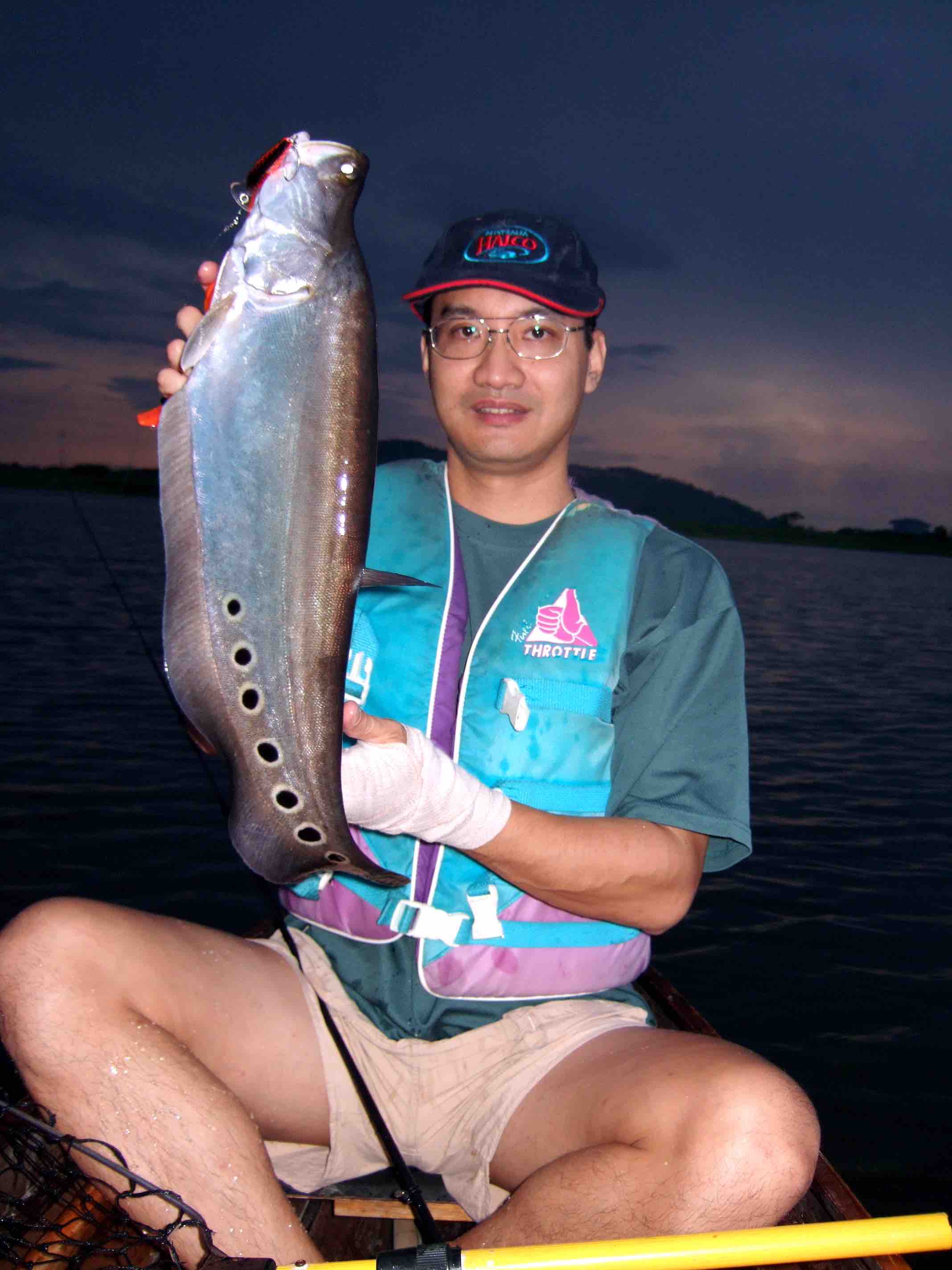Belida
by-catch
by Christopher S.G. Tan
A common term used by commercial fishermen is “by-catch”. For commercial fishermen “by-catch” refers to species caught in a fishery intended to target another species. Recreational anglers too have their by-catch. Both bait and lure anglers often catch species they are not targeting. For myself as a frequent lure angler and others who fish with me, fishes we often catch on lures as a by-catch are bujuk, baung, kalui, cichlids and belida.
All of them have one thing in common: they feed on live fishes which are what the lures are supposed to simulate. Hence they do get fooled by metal and synthetic simulations now and again.
One by-catch which I have found rather interesting of late is the spotted belida or featherback. Only in recent years have I begun to catch or see belida get caught on lures. Maybe it is because I have been spending more time fishing the ex-mining ponds with lures where these fish are quite prolific. We were normally at these ex-mining ponds to target toman, occasionally sebarau and sometimes haruan; and we found we sometimes caught the spotted featherback. A very pretty fish.
The first spotted featherback I caught was a couple of years ago when I was exploring an ex-mining pond after work with Patrick. We were running late and had got there with just half an hour of fishing light left.
We had just grabbed whatever gear was at hand and drove to this ex-mining pond that I used to fish for haruan. We were hoping to turn up some haruan but when we got there we found the lake level very, very low due to the hot mid-year drought. All the banks were exposed sand and earth banks with no vegetation growing by the water to allow the haruan to hide.
We decided to launch into the pond anyway and as we paddled across the lake we noticed there was a lot of activity in the water as it grew darker. We cast our lures out with no success. Then leaving the lures out we dragged them behind us as we paddled to another spot. When we stopped paddling and were gliding to a stop I suddenly had a hit. I had no idea what had connected to my Tilsan bass till it went airborne and we both shouted “belida”!
We both were pretty excited but we managed to net the spotted featherback. As we had hurriedly left my house, I did not bring my camera. Fortunately, Patrick had his camera phone handy to digitally record my first belida on lure. At that time, we did not know exactly what fish we were targeting, but still we got a fish, so we were happy.
The next featherback catch came a couple of months later when Patrick had just cast out his lure and it had just started to move when he suddenly had a ferocious take. A spotted featherback had taken his lure, and was jumping around a lot, throwing water around. Patrick was very pleased with his early morning catch.

Another spotted featherback catch was when I was fishing with my sons in the canoe and the lure retrieval was unintentionally a lazy action as I was slowing down and feeling a little bored due to the lack of a catch the whole evening and we were about to end the day. Then suddenly I felt a tug and something heavy pulling on the other end of the line. After the initial pull, it became a dead weight. This has been the only featherback I have caught that did not jump and it acted more like a plastic bag in the water than a fish.
By now I began to have my suspicions about the lure action preference of this species as a pattern was beginning to form. All the catches so far had been when the lure was moving slowly. Three catches with lures made it unlikely that they were chance catches but more likely it was a pattern emerging. We normally do not fish our lures with slow retrieves in Malaysia so it could be that we had been missing this catch all the while. In addition if this species (invasive, non-indigenous) has only recently become more common and prolific in our waters, then this could be another factor leading us to seeing more of this species caught on lures.

This nice
Clown featherback was caught in Malaysia with a Halco Sorcerer
90
The most recent catch of this striking fish was when we were targeting peacock bass. Again we were working our lures very slowly, trolling them by the weed bed edge. We did it so slowly that the lures if not twitched would not have any action. The twitching therefore allowed me to give the lure I was using, a sorcerer 90 skinny deep, its strong rolling action. Obviously the slow twitching action must have been an attraction to the spotted belida that eagerly whacked the lure and pulled strongly then surprising us by giving a lovely airborne display to show us that it was not a peacock bass but a spotted featherback.
All our catches have similar traits which do show initial possibilities of further consistent catches taking into account these factors. We felt that the primary factor which caught this fish is a slow retrieve, possibly the slower the better so long as action can be imparted to the lure. A very short twitch with the rod tip will give it minimal forward movement but a good enticing movement. Alternatively use lures that give a strong roll and action with a very slow retrieve.
All the catches too were at dawn or at dusk in open deep water, except for the catch next to a weed bed which was taken when the sun was high at mid-morning. Successful lure body size ranged from 5cm to 9cm. The lures that I've had success with have been the Halco Sorcerer 90, Tilsan Barra and Tilsan Bass. We had tried using smaller lures, thinking that the fish would feed on smaller baitfish and we would get more bites on them, but to date we have had no success on small lures as yet.
Conservation


We need to protect and conserve our resources by practising catch and release of our sportfish and protecting the habitat of our fishes.

